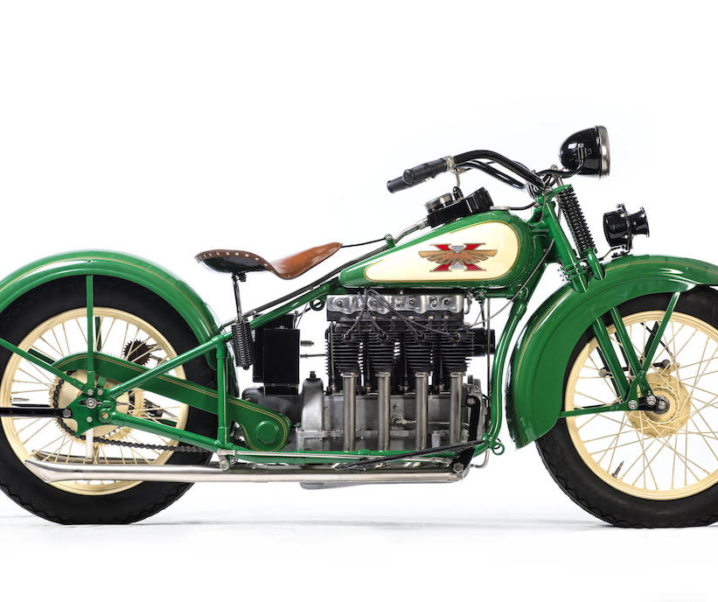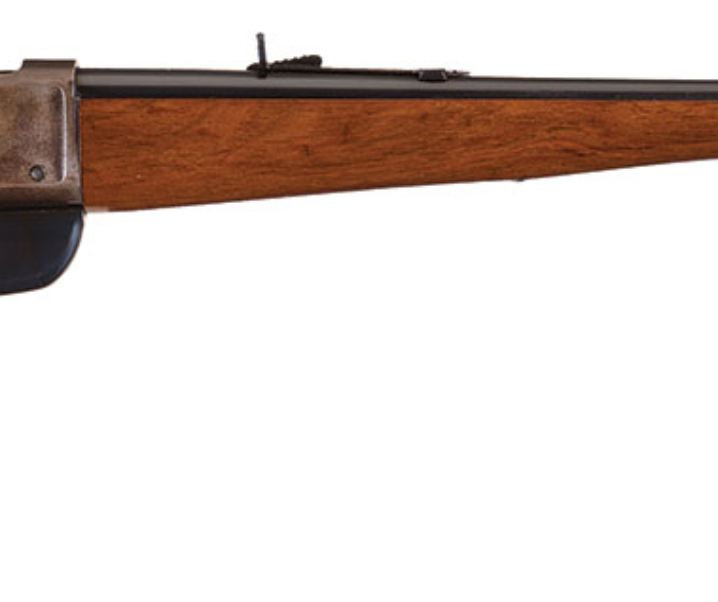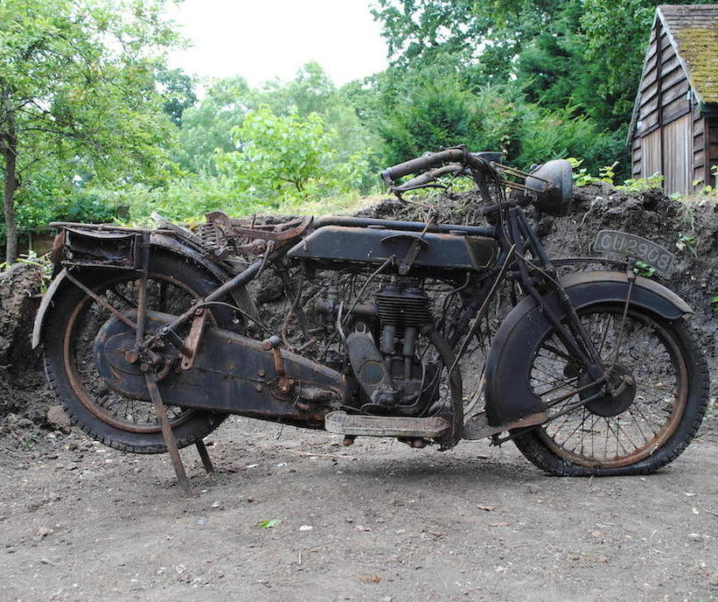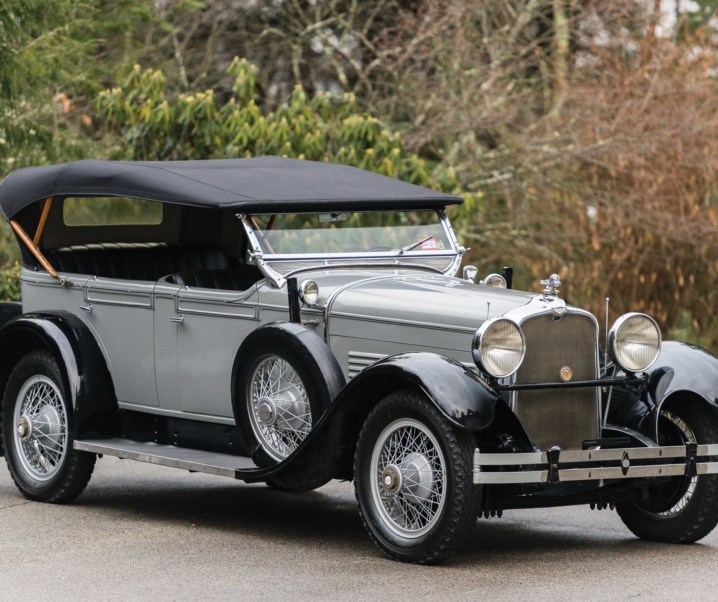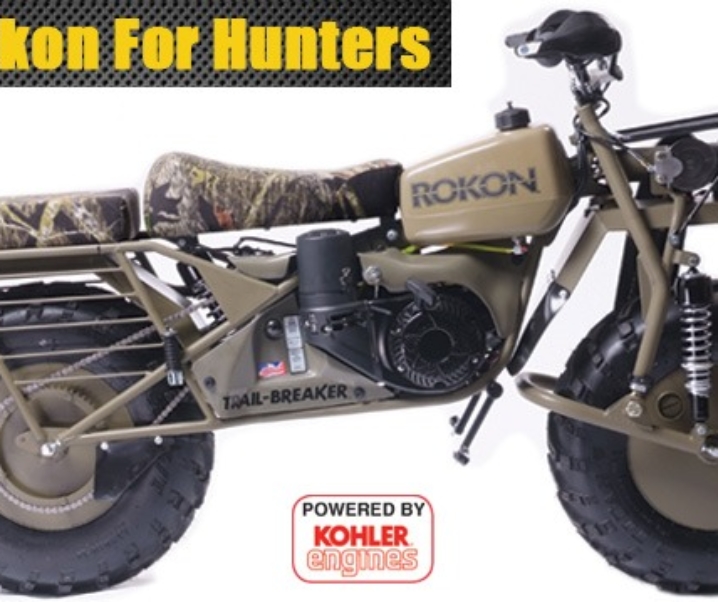History
Heym began making firearms back in 1865 and by 1891 they had advanced to the point where they became the first manufacturer to patent a design for a hammerless drilling (i.e. three barreled gun). That first hammerless drilling featured three triggers and three hammers located in the same plane. The main emphasis for Heym was traditional break-action drillings, double-rifles, and single-shot rifles. The company survived the two world wars and in 1952, after the second World War was over, they moved to a new factory in the town of Münnerstadt, where they obtained their first hammer forging machine in 1960. Münnerstadt was to be Heym’s home base throughout the 1960’s, 1970’s and 1980’s, and it was during those years that the company began working to develop export markets, both to the Soviet Union and the Eastern Bloc, and to Europe and the United States. This was partly helped by their obtaining a contract with Mauser to make the actions for the Mauser 3000 and 4000 series of rifles.

The Heym SR20 and Derivatives
When the contract with Mauser ended Heym decided to make the rifles under their own name and so these rifles became the Heym SR20 series and its siblings. I owned one of these Heym SR20N rifles in .308 Winchester from the early 1980’s until I was forced to part with it in the mid-1990’s as I was moving to another country for a work contract, and that new country was not rifle friendly. These Heym SR20 rifles were good quality and not horribly expensive, mine had a very nice walnut stock, much prettier than the one in the picture above. They were a push feed action like most bolt actions of the 1980’s, with a substantial claw extractor. The right side locking lug had a slot in it that ran in a right side action rail: this made the action very smooth but also made the ejection angle quite high, although not so much that it would cause cases to hit the adjustment turret of the rifle-scope. The safety catch was a three-position type mounted to the right of the bolt shroud behind the bolt.
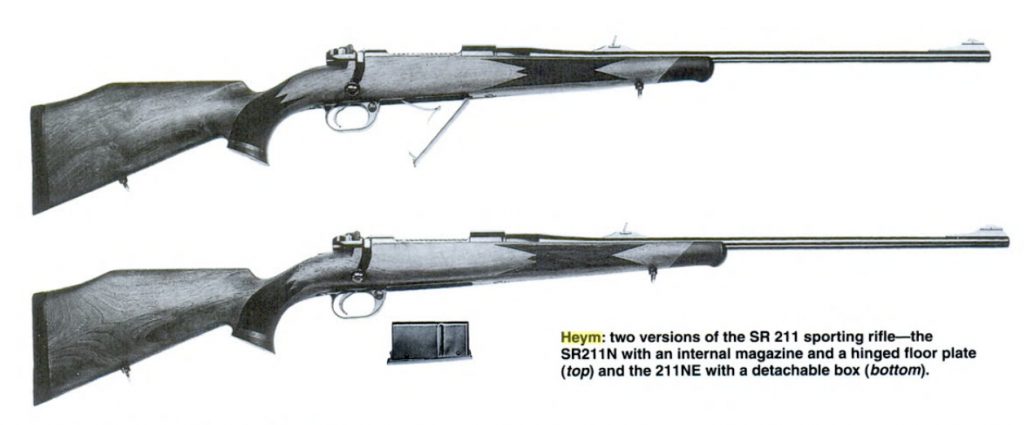
The Heym SR20 and the models that followed on from it were typical sporting rifles of that era, much like the post-64 Winchester Model 70 and the Remington 700. Heym wanted to expand their export market to the United States and by the 1980’s were already working in cooperation with Ruger, building the Heym single-shot rifle on the Ruger No. 1 action.

(Note: you can find “Rifles of the World” and other books by John Walter on Amazon if you click here).
Development of the Heym Express Rifle
During this period Heym were able to achieve success in export markets, especially in both Eastern and Western Europe, but not so much in the United States, most likely because the American market is significantly different to that of Europe. It was to be Heym’s discovery of a suitable pathway into the US market that would lead to the creation of the completely new Heym Express Rifle. Heym had sought advice from well respected American rifle aficionado Tom Turpin during the 1980’s and he had showed them his own classic British Rigby bolt action magazine rifle. But at that time the management and design team at Heym were thinking “modern”, more in the Weatherby, Winchester and Remington style, and not in the style of the “fuddy duddy” British. They were not yet ready to risk committing significant resources to create a modern classic design.

Heym moved from Münnerstadt and established a new state of the art factory in Gleichamberg, Thuringia, in 1995 and in the process as management changed and the environment became one in which new ideas were perhaps more welcome. It was during this period that Heym had been improving on their double rifles the Heym 88B and the Heym 89B and were able to establish a following amongst professional hunters in Africa, Australia and other places. It was Heym’s success in this niche market that led to discussion between Chris Sells of Double Gun imports and Heym USA, and Thomas Wolkmann, who had become the owner of Heym, and who had re-established it as HEYM Waffenfabrik GmbH (Limited) in 1998.
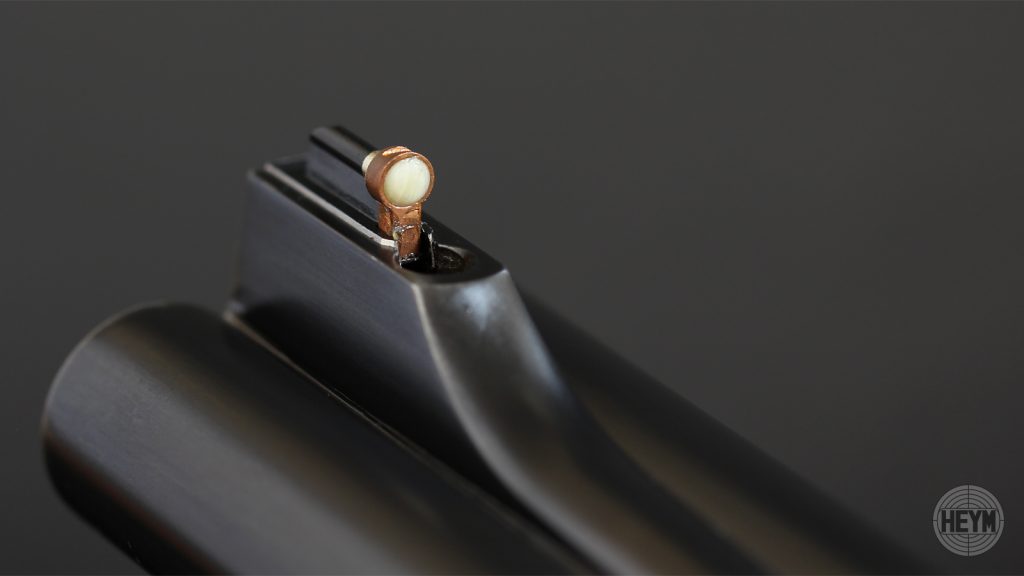
In their 2006 meeting Chris Sells explained to Thomas Wolkmann that the reason the Heym double rifles were doing so well was because they were an excellent rifle for the African professional hunter and trophy hunter market. He then went on to explain that if Heym wanted to establish themselves in the bolt-action rifle market they would be best to start in that same niche – African Safari rifles – bolt action rifles for trophy hunters and professional hunters. To successfully achieve this Heym would have to design and create a rifle that was better than the competition, and the competition included the new Mauser 98 and rifles based on it such as the Rigby. Heym would also have to break out of the mold that American rifle buyers had mentally placed them in: that of being makers of nicely made, but in design quite unexceptional, push feed bolt action hunting rifles. For example, I enjoyed my Heym SR20N, but I would not have ordered one in .375 Holland & Holland Magnum to use as a dangerous game rifle: I would have purchased a Winchester Model 70 Safari Express or Mauser 98 controlled feed action rifle for that purpose. This was to be a tall order, but Heym took up the challenge.
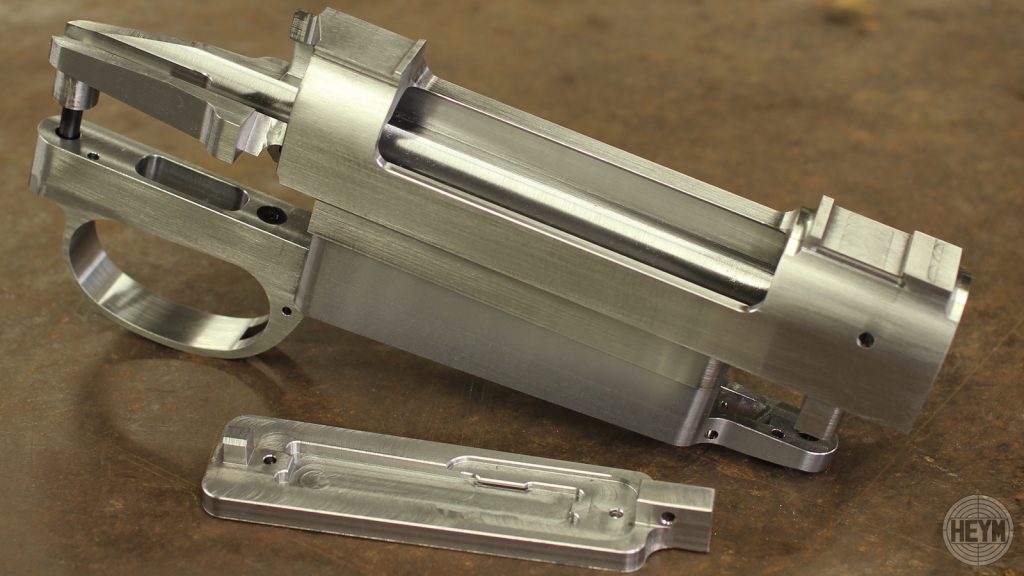
Ralf Martini and the Heym Express Design Concept
Initial thoughts on the creation of a safari rifle appear to have begun with thinking about the stock design, before getting to the notion of designing a complete action and new rifle from the ground up. Chris Sells got into discussion with custom rifle-maker Ralf Martini, initially with a proposal to have Ralf make fifty stocks per year for a new Heym Safari rifle, but Ralf Martini was not interested in that project, nor in any mass production project. Ralf instead offered to do a stock design for Heym, and then from the stock design discussions took place over more than two years as Ralf Martini progressively explained and demonstrated the elements that make a safari rifle, and not just any safari rifle, but a great safari rifle. Discussions and exchange of ideas eventually led to Chris Sells and Heym asking Ralf Martini to create a rifle in .375 Holland & Holland Magnum that embodied his ideas. Ralf agreed and began work on this project in 2010. This was to be a project in which Ralf Martini took pains to perfect every detail of the new rifle down to the stock design, open express sights, barrel contour and the fitting of open sights and barrel band sleeved and soldered onto the barrel. The Martini rifle also included a double square bridge Mauser 98 style action with integral bases for Talley quick detachable mounts machined into the receiver ring and bridge.
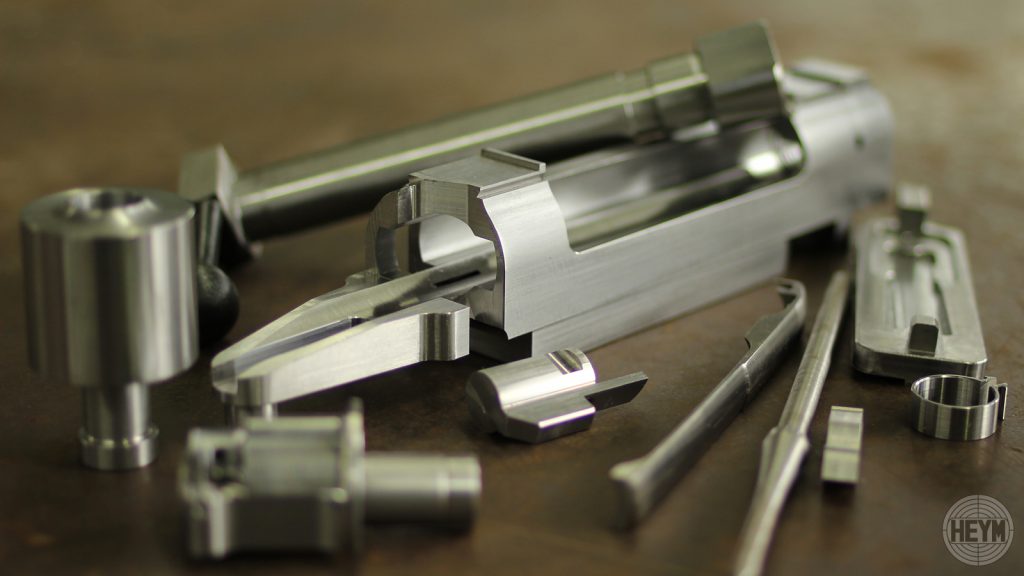
The prototype rifle was displayed at the Dallas Safari Club and SCI events, and at the American Custom Gunmaker’s Guild. Heym took the prototype to the European International Waffen Ausstellung (IWA) exhibition and displayed it there to ascertain potential buyer response. There were some quite persistent potential buyers with check books who wanted to pre-order a rifle. Faced with such a positive response Heym decided to make a new Express rifle based on the Ralf Martini prototype, and so the Heym design team got to work.
Armed with a state of the art manufacturing facility, including EDM and CNC machinery, Heym began by creating their own version of the classic Mauser 98 action. This was not to be a Mauser 98 copy however, the action was made with a 0.78″ diameter bolt, a little larger than the classic Mauser 98 Magnum action which is 0.70″. This meant that the new Heym action was to be capable of handling any of the classic Big Game calibers including the .500 Schuler (.500 Jeffrey) and the .505 Gibbs. The calibers to be offered in the first series of rifles did not include those two just yet however, but the chosen calibers were .375 Holland & Holland Magnum, .404 Jeffrey, .416 Rigby, and .458 Lott. This was a thoroughly thought through offering.
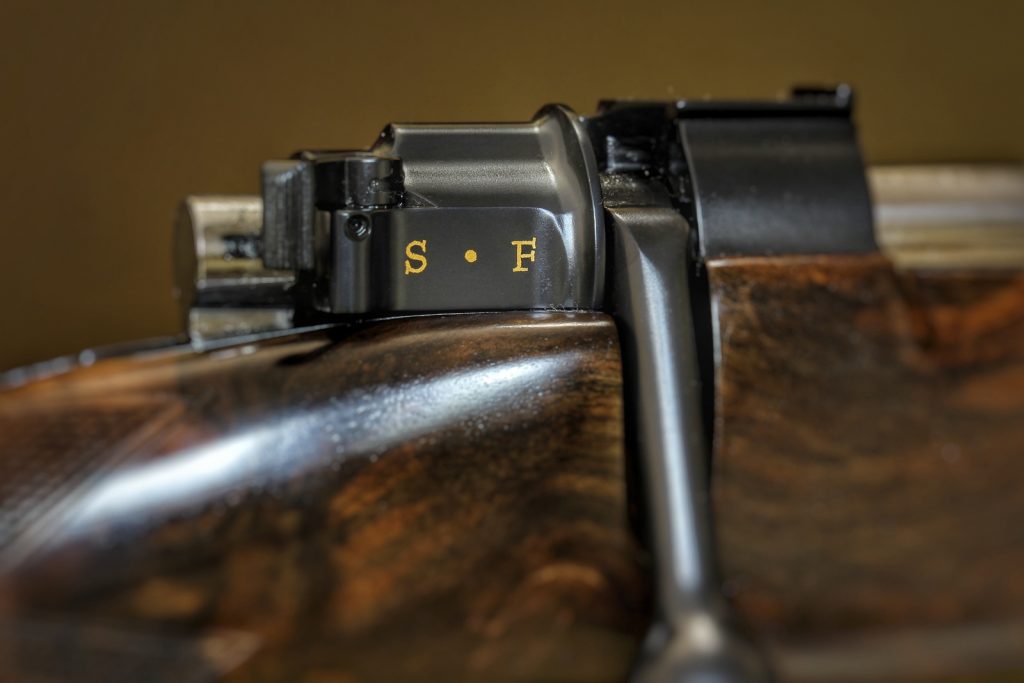
A dangerous game rifle has to work with absolute reliability no matter what, and a magazine rifle for dangerous game use should hold as many cartridges as possible whilst not requiring a protruding magazine that makes the rifle uncomfortable or awkward to carry. Heym engineers decided to build each Express rifle to be caliber specific, so it was a perfect fit for the caliber and cartridges. The magazine was made a little wider than a standard Mauser and profiled for the specific cartridge to be used. This enabled a flush floor plate but with four rounds in the magazine instead of the usual three in magnum calibers. Not only did the Heym Express rifle provide “four down and one up”, i.e. five rounds capacity in the rifle, but the form fitting magazine also provided retention of cartridges at the shoulder: this provides protection for soft pointed bullets, especially soft pointed spitzer bullets, from deformation caused by a soft point shifting forward and impacting against the front of the magazine box during recoil. The original Mannlicher-Schönauer rifle’s rotary Schönauer magazine provided both an extra round in the magazine and cartridge retention at the shoulder so soft point deformation did not occur. The Heym Express rifle achieves both these things without the complication of a rotary Schönauer type magazine. This magazine box was made a snug fit with the action and stock.
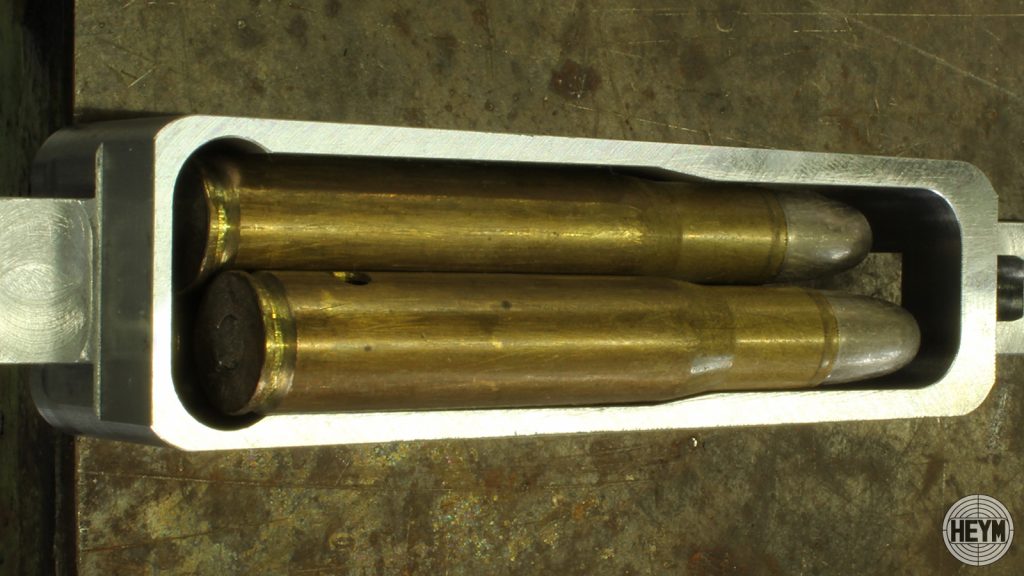
Amongst the improvements over the standard Mauser 98 was the use of a one piece firing pin which was screwed into the front of the cocking piece and secured with a set screw. This made for a solid, uncomplicated and reliable unit. Bolt disassembly was made as simple as it was on the Heym SR20 rifles, the bolt-shroud locking pin is depressed and the bolt-shroud turned, which releases the assembly as the bolt-shroud locks to the bolt-body by a single cam. This simplicity in bolt disassembly was one of the things that owners of the SR20 tended to appreciate, so it’s excellent that the Heym Express has kept things just as convenient.
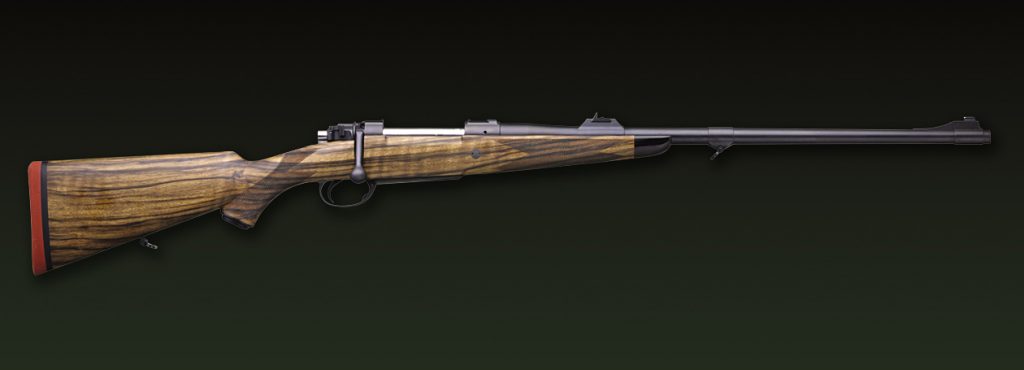
The Ralf Martini designed stock was uncompromisingly classic and its straight style has been made to optimize the rifle’s instinctive shotgun like point-ability. Added to this the straight design directs recoil straight back into the shooter’s shoulder providing excellent recoil absorption and quick recovery for follow-up shots, something that can be essential on dangerous game. The action was glass bedded into the stock up to the chamber area of the barrel, and from there on free floating. The action features two recoil lugs that provide about twice the area as those on the Mauser 98 action. The stock reinforcing cross-bolt is shaped and bedded directly against the front locking lug to ensure the stock is protected against splitting.
The metal finish on the Heym Express is a non-reflective satin blue ideal for a hunting rifle, whilst the open sights and barrel sling swivel are all fitted around the barrel and soldered in place to ensure nothing comes loose. Having a front sight fall off at the rifle range can be just plain irritating: having one fall off when you are being charged by something unfriendly would be at a whole different level of irritating. Everything about a dangerous game rifle must provide a dependable level of “life insurance” for the hunter: that is what the Heym Express Rifle is made to deliver.

Specifications
Conclusion
The Heym Express rifle is made as a rifle for the African professional hunter, and for trophy hunters heading down to the Dark Continent. But it does not stop there, a Heym Express rifle in .375 Holland & Holland Magnum fitted with a moderately powered rifle-scope, such as a 1.5-6×42 for example in quick detachable Talley rings, becomes a perfect rifle for the “one rifle world-wide hunter”. With the open sights set for suitable dangerous game ammunition such as the Federal Cape Shok loaded with the Woodleigh 300 grain Hydro bullets you have a rifle that will do good work on “Mr. Big Ears” and any of Africa’s “Big Five”. With the rifle-scope set up for a long range 375 H&H loading such as the Hornady Superformance 250 grain GMX you have a rifle that will prove perfect for any African plains game, and that will be suitable for pretty much any medium to big game anywhere else on earth. You might be a tad over-gunned for white tail or fallow deer, but being a tad over-gunned is never a handicap.
The Heym Express rifle is brilliantly designed, made with the impeccable attention to detail and quality we have come to expect from German makers such as Heym. This is a rifle that, if you were only going to own one, this would be one of the best possible choices you could make.

(All pictures courtesy Heym unless otherwise noted).

Jon Branch is the founder and senior editor of Revivaler and has written a significant number of articles for various publications including official Buying Guides for eBay, classic car articles for Hagerty, magazine articles for both the Australian Shooters Journal and the Australian Shooter, and he’s a long time contributor to Silodrome.
Jon has done radio, television, magazine and newspaper interviews on various issues, and has traveled extensively, having lived in Britain, Australia, China and Hong Kong. His travels have taken him to Indonesia, Israel, Italy, Japan and a number of other countries. He has studied the Japanese sword arts and has a long history of involvement in the shooting sports, which has included authoring submissions to government on various firearms related issues and assisting in the design and establishment of shooting ranges.






